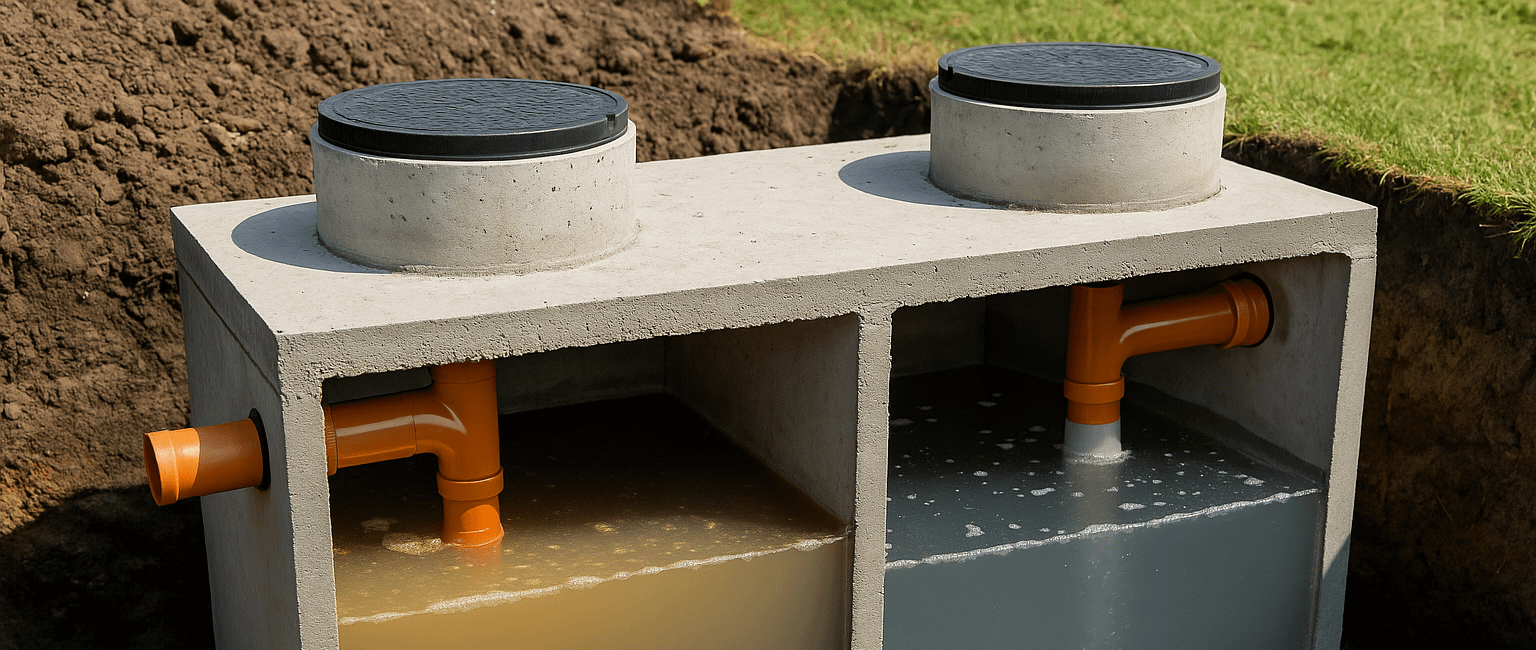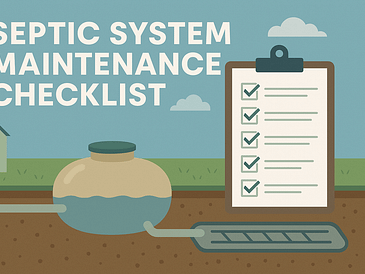Understanding Two Compartment Septic Systems: A Superior Wastewater Solution
When designing or upgrading your home’s septic system, choosing the right tank can significantly impact your system’s efficiency, longevity, and environmental safety. A two compartment septic tank offers superior wastewater treatment compared to traditional single compartment tanks—making it the preferred solution for modern installations in 2025 and beyond.
What Is a Two Compartment Septic Tank?
A two compartment septic tank features an internal baffle that divides the tank into two chambers. Wastewater flows from the first chamber into the second through a specially designed opening, allowing for improved separation and treatment of solids before entering the drain field.
- First compartment: Solids settle at the bottom (sludge), lighter materials float (scum), and liquid effluent remains in the middle.
- Second compartment: Further settling and biological breakdown occurs, producing cleaner effluent.
“Dual compartment tanks offer enhanced effluent quality and better protection for drain fields, making them a smart long-term investment.” — Michelle Davis, Licensed Septic Engineer
Single vs. Two Compartment: Key Differences
Structural Enhancements:
- Internal dividing wall (baffle)
- First chamber = ~2/3 of total capacity
- Second chamber = ~1/3 capacity
- Controlled effluent transfer between chambers
Performance Benefits:
- Cleaner effluent output to drain field
- Enhanced solid retention and settling
- Improved biological treatment process
- Reduced clogging risk and system failure
“The second compartment acts as a polishing stage, reducing the organic load to your leach field.” — Greg Timmons, Wastewater Consultant
Local Regulations & When They’re Required
Many jurisdictions now mandate two compartment tanks for:
- New construction projects
- Failing septic system replacements
- Homes near environmentally sensitive zones
- Large residential or commercial properties
Always confirm with your local health department or septic code authority.
Material Options for Two Compartment Septic Tanks
Concrete:
- Durable, 30+ year lifespan
- Heavy and stable once installed
- Can crack in freeze/thaw conditions
Plastic (Polyethylene):
- Lightweight and corrosion-resistant
- Lower installation cost
- Needs anchoring in high water tables
Fiberglass:
- Strong, lightweight, and chemical resistant
- Good for high water tables
- More expensive than plastic
Sizing Guidelines
- 2–3 bedrooms: 1,000–1,250 gallons
- 4 bedrooms: 1,250–1,500 gallons
- 5+ bedrooms or high usage: 1,500+ gallons
“Always size for future growth—installing a slightly larger tank now can save thousands later.” — Erica Fulton, Residential Septic Designer
Installation & Access Considerations
- Soil testing and groundwater evaluation
- Inspection ports over both compartments
- Risers for easy maintenance access
- Professional installation ensures compliance and longevity

Maintenance Schedule
Pumping:
- Every 3–5 years depending on usage
- Both compartments must be pumped
Inspection:
- Every 1–3 years
- Check sludge levels, scum, baffles, and effluent filters
Common Warning Signs:
- Sewage odors around tank or house
- Lush grass over drain field
- Gurgling toilets or slow drains
Troubleshooting Issues
- Clogged baffles: Clean and install an effluent filter
- Structural damage: Replace or repair the tank
- Overuse: Spread water use; consider system upgrade
Extending System Life
- Install low-flow fixtures
- Avoid flushing wipes, grease, or chemicals
- Keep trees and structures away from drain field
“Two-compartment tanks last longer when combined with smart usage and regular maintenance.” — Laura Patel, Septic System Specialist
Costs & Long-Term Value
- Tank: $1,500–$5,000+
- Install: $2,000–$10,000
- Total: $5,000–$20,000+
Though initial costs are higher than single compartment systems, long-term savings and protection justify the investment.
Environmental Advantages
- Reduces nitrogen, pathogens, and phosphorus levels
- Prevents drain field contamination and failure
- Supports sustainability and groundwater protection
Upgrading from a Single Compartment System
- Retrofit with second tank or baffle upgrade
- Upgrade during renovations or if the system is failing
- Weigh cost of repairs vs. new dual-compartment installation
FAQs
- Do they require more maintenance? No, just thorough servicing of both compartments.
- Can I install one myself? Not recommended due to permitting and risk of failure.
- How long do they last? Concrete (30–40+ yrs), Fiberglass (25–30+), Plastic (20–30)
- Are they required? Often yes—especially for new builds or environmentally sensitive areas.
Conclusion: Is a Two Compartment Septic System Right for You?
Two compartment septic tanks offer improved performance, better effluent quality, and reduced risk of drain field failure. While they may cost more up front, the long-term environmental and maintenance benefits make them a superior choice. For help selecting, sizing, or installing a dual-compartment tank, contact Septic Service Center—your local experts in septic system design and care.





